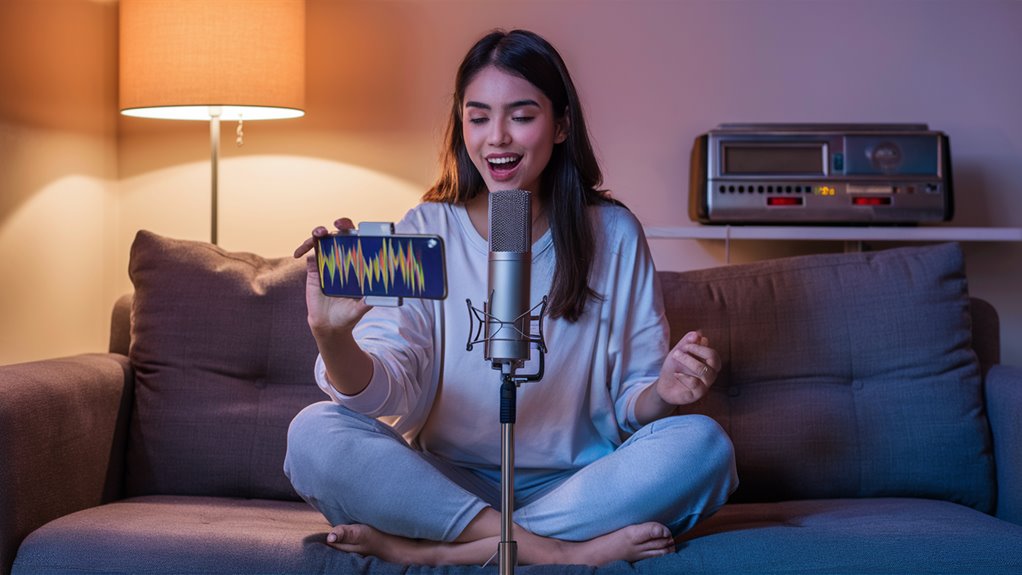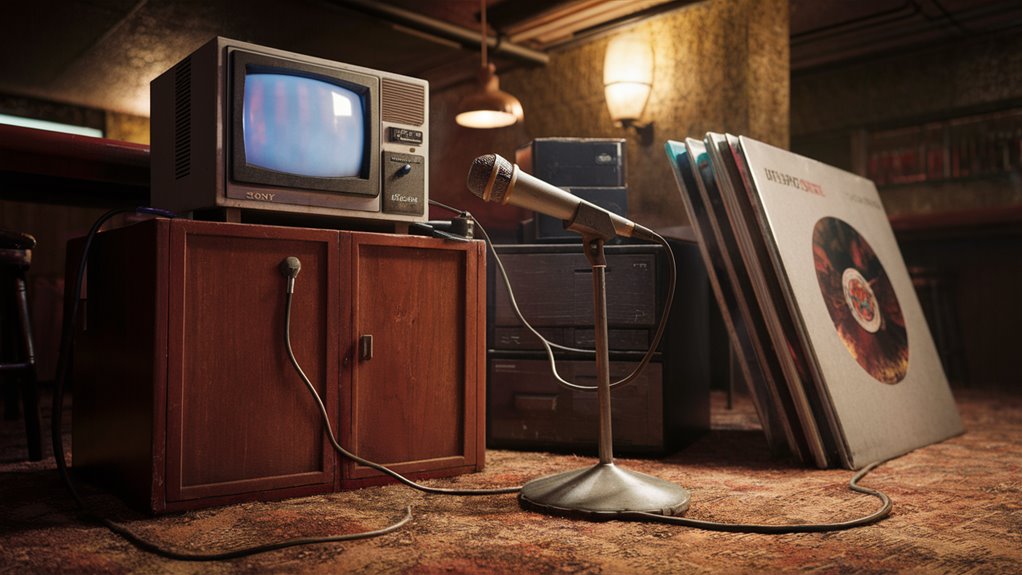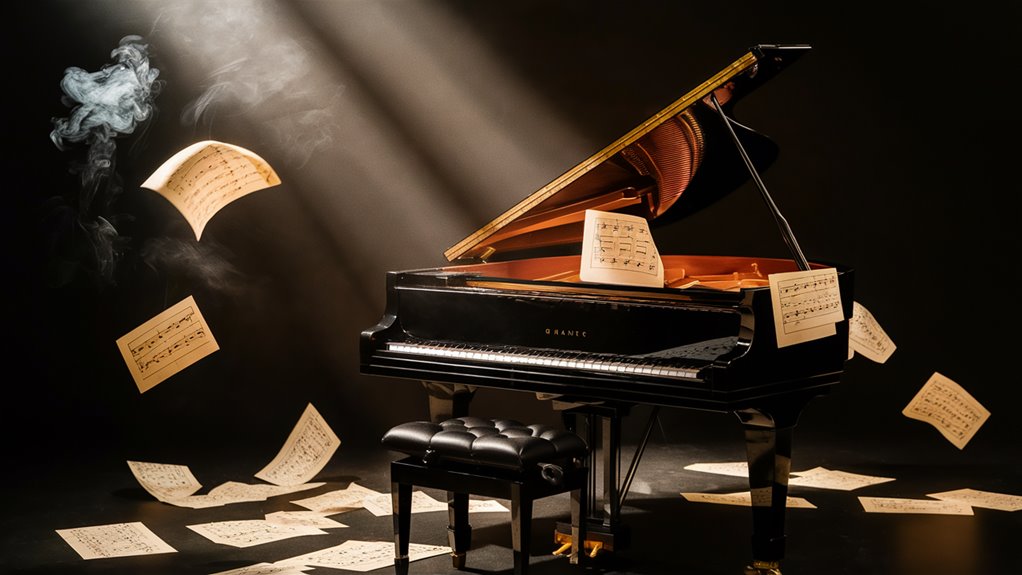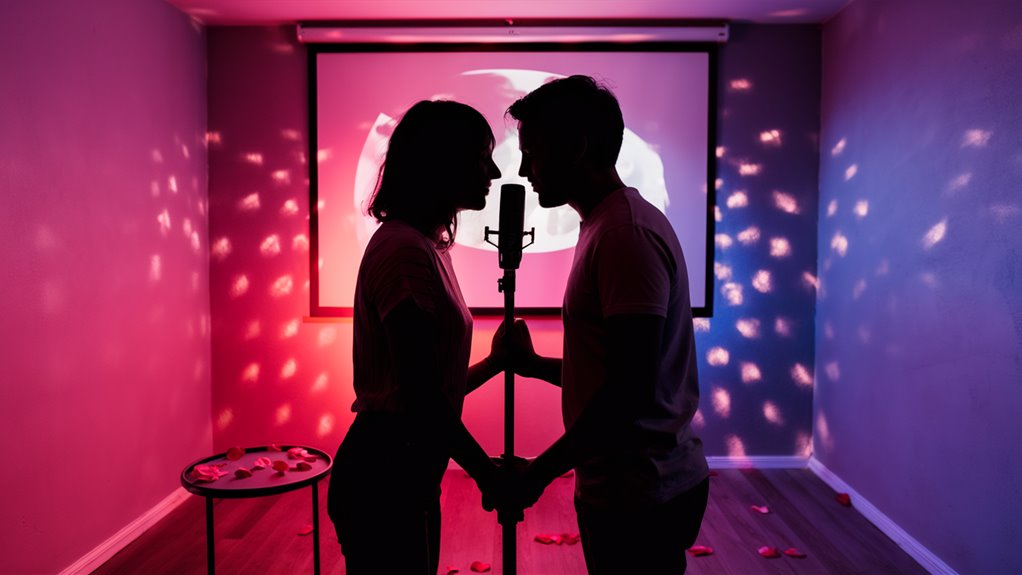How Karaoke Tech Changed: From Old Tape to AI

The long road of karaoke tech now spans over fifty years of cool new tech. In 1971, Daisuke Inoue changed fun with the first 8-track karaoke box, setting up what would become a hit all over the world.
First Karaoke Machines and How They Got Better
The first karaoke machines had just a mic and a tape, making it easy to sing along. By the mid-1970s, LaserDisc tech changed the game with lyrics showing on the screen, a big step up in how fun it was.
The Jump to Digital and New Features
The 1990s brought the CD+G (CD+Graphics) tech, giving us better sound and better screens. Digital compression and MP3 tech then let us save way more songs, making machines smaller and better.
Phones and Smart Tech Join In
Smartphone apps like Smule and StarMaker made it so anyone could sing anywhere. These apps mix in sharing songs, friends seeing your songs, and lots of music, making old karaoke a new thing.
AI and Being Online Make It Even Better
Now, AI karaoke machines can:
- Make your voice sound better
- Give you tips as you sing
- Let you sing in made-up spaces
- Let you sing with others, no lag, over 5G
- Let two people sing at the same time with no delay
We’re looking at even cooler stuff with augmented reality, virtual reality, and smart learning systems, as karaoke keeps changing.
How Karaoke Started
How Karaoke Began: A Big Change in Music
The First Karaoke Machine Was Made
In 1971, Japanese guy Daisuke Inoue made the first karaoke machine, though he never got a patent for it.
His first try, the 8-Juke, came from his time playing music in bars in Kobe. When people wanted songs in different keys, Inoue made tapes to sing along with when he wasn’t there.
What “Karaoke” Means and How It Spread
The word “karaoke” comes from two Japanese words: “kara” (empty) and “ōke” (band), just right for music tracks with no singing.
In 1972, Clarion Corporation built the first big batch of karaoke machines, called the Sparko Box, making the tech shoot up fast throughout the decade.
Its Big Role and Spreading All Over
Karaoke got big in Japanese work places because of nomikai (fun meet-ups), making it huge.
Big tech companies, including Brother International and Pioneer, started making their own machines.
In the late 1970s, karaoke became a must-have in Japanese fun spots, setting the stage for it to go big all around the planet. This singing style soon caught on everywhere, becoming a must-have at parties.
The Gear and Tech Early On
Old Karaoke Gear and How It Got Better
The Very First Systems
The earliest karaoke tech started with basic analog parts that were the heart of it all.
These early systems used 8-track tapes together with simple sound mixers and mics, letting people sing with music in the back.
This first gear used analog sound working and basic loud systems to give the karaoke fun.
When LaserDiscs Came Along
In the mid-1970s, LaserDisc karaoke systems came out. They brought synced lyrics on-screen and better sound to karaoke.
The systems showed words moving on simple blue backs, using deep tech to sync it all right.
LaserDisc karaoke boxes hooked up to TVs with simple video links, and special sound lines took care of the audio.
Into the Digital Age
A big tech step came in the late 1980s with digital sound helpers and better mixing.
Makers added digital sound tech, with echo making it sound fuller.
The growth of karaoke gear went from big box setups to small all-in-one systems, putting video and sound mixing and loud parts all in one. This shift set up today’s karaoke tech.
The Jump to Digital
The Big Change to Digital in Karaoke Tech

Going Digital
The digital change really shook up karaoke tech through the 1990s and early 2000s.
CD+G (Compact Disc + Graphics) took over from old LaserDisc systems, making them last longer and cheaper to make while keeping great sound.
New Digital Storage and Making Songs Small
Digital squeezing techs like MP3 and MIDI changed how we keep karaoke songs.
Moving from big LaserDisc sets to neat hard drive systems changed how songs were kept. By 2000, karaoke folks could get countless songs on smart digital systems, leaving old ways behind.
New Cool Software Stuff
Software new things brought amazing new ways to have karaoke fun.
Digital key help let you change how high or low without messing up the beat, while voice making better tools made mics work better.
Adding score systems and on-the-spot pitch finders turned karaoke into a fun game.
Today’s Karaoke Spots
Now we see cloud-based karaoke and phone apps leading the way.
These smart setups let you get to big song lists fast, keep getting new songs, and mix in social stuff for sharing your singing online.
This big digital change has switched how we get to karaoke, making it a more linked and lively fun time.
New Phone Karaoke Apps
How Phone Karaoke Apps Have Changed Things
The Digital Shift in Fun Singing
Phone karaoke apps have really changed how we have fun since 2010.
Top platforms like Smule, StarMaker, and TikTok have turned regular karaoke into easy, on-demand fun.
By 2015, these digital spots made it new with better sound playing, auto voice fixing, and built-in sharing – things old karaoke didn’t have.
New Tech and Cool Add-ons
Between 2016 and 2020, phone karaoke tech really grew fast.
Big moves included AI helping with your voice, real-time duets, and huge cloud song lists with tons of legal tunes.
Pay-to-use setups came out as the main way to make money, letting platforms keep lots of songs while handling rights the right way.
New Stuff and Growing the System
The phone karaoke scene has grown to include cool fun add-ons, like made-up singing spots, live show tools, and fun group games.
By 2023, these platforms had mixed in top tech like mixed-up real-world play spaces, sound-making choice tools, and pro recording.
This digital change has built a full system where singers can make, share, and even earn on phone karaoke spots, changing old karaoke work ways.
How It Touches Us and Matters a Lot
How Modern Karaoke Hits Us and Means a Lot
Big Social Change With Karaoke
Modern karaoke spots have really changed how we connect and show our culture all over.
Karaoke has moved past just being Fresh Ideas fun to being a big push in society, breaking down culture blocks and making ties between all ages.
Sharing Culture and Mixing in Work
From 1990-2010 was key in karaoke’s big role, showing both keeping old tunes and letting different cultures share music.
As karaoke came from Asia to the West, it opened huge chances for sharing music between cultures.
In jobs in Japan, Korea, and China, karaoke is now a must for building teams and keeping good work friends.
Digital Moves and Being Together from Far
The digital shift in karaoke has made it matter even more, turning a once local fun time into a big group thing all over the world.
Modern karaoke apps mix in social media and live shows, making groups where singers share songs beyond borders.
This new tech way has made music open to all through phones, breaking past old blocks of place and society limits.
Big Parts it Touches:
- Talking between cultures
- Building teams at work
- Making digital friend groups
- Keeping old songs going
- Linking fun all over
What’s Next in Karaoke Fun
What Karaoke Will Be Like: Tech Changing It After 2024
AI Making Karaoke New
Artificial intelligence is making karaoke cooler with smart voice help and songs that fit your voice.
Modern karaoke spots use AI to know your voice style, highs and lows, and what you’ve sung before, picking songs just for you.
These smart karaoke spots fix your voice in real time but keep it real.
New Tech Making Singing Feel Real
Virtual reality and augmented reality are making karaoke like never before.
VR karaoke systems take you into cool music video spots, while AR features mix lyrics, cool effects, and fake singers into the real world.
These techs make karaoke a mix of digital and real, making it a truly new way to sing.
Clouds and Being Together Without Delays
Cloud karaoke spots blast through place limits with 5G networks, making quick global shows and duets without lag.
Singers can now join global karaoke shows from anywhere, with perfect sync for all singers.
Social media links let you share your songs on many spots all at once.
Smart Voice Checks and Lessons
Learning systems now give full voice checks, telling you how you did on tune, beat, and how you sing.
These smart karaoke systems work great as learning tools, with pay-for-extra systems giving cool features like:
- Pro-level voice effects
- Lessons just for you
- Deep singing checks
- Custom voice fixes
- Great song cutting tech
Mixing these techs is making a huge change in karaoke fun, turning old singing times into a live, learning, world-linked thing.


